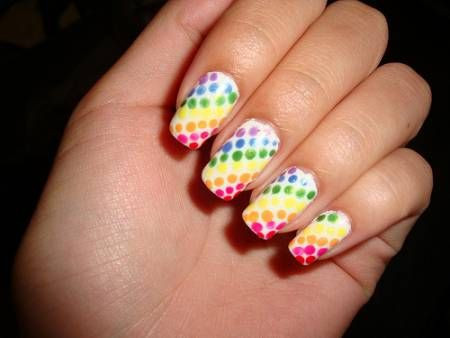Gel Manicures Can Lead To Cancer

Gel manicures are the new fad among women who want their nails to be stronger and their nail polish to last longer. But the process of applying and hardening the finish may put women are risk for cancer according to a new study.
Dr. Chris Adigun, MD from the New York University School of Medicine, performed a study that linked the Ultraviolet light used in the procedure to higher rates of cancer.
Gel manicures seal the nail after the polish has been applied and UV light is used to cure the liquid to become hard and durable. But in the process the hands are being exposed to unregulated wavelengths of UV light that can damage the skin and cause cancer, similar to how tanning beds are known to cause cancer.
In 2009 a report was released detailing two middle-aged women who grew tumors on their hands after repeated gel manicure sessions.
Another issue that Dr. Adigun brought to light was that because the nails were covered with a protective layer and it lasted longer than regular manicures, people need to be aware that things might be going on under the nail polish that may harm their health.
Dr. Adigun offered these tips for healthy nail care:
- Pay attention to your nails and allow nails to regrow and repair. Consider getting these manicures occasionally rather than every two weeks to decrease the consequences of chemical and physical trauma.
- If you get gel manicures, wear a broad-spectrum sunscreen on your hands to minimize photodamage as a result of the UV exposure during the curing process.
- Be very proactive with the manicurist. Tell her not to push or manipulate the cuticle because that will increase the risks of inflammation and infection and also dry out the nail.
- Use traditional nail polish instead of gel nail polish if you experience recurring nail problems. Women with a known allergy to acetone also should use traditional nail polish because acetone is required to remove gel polish.
- Rehydrate nails several times a day with a moisturizing product, such as petroleum jelly, to reverse any signs of brittleness, thinning, or chipping.
- Don't chip gel nail polish with other nails or tools to remove polish.
- To decrease irritation to the skin, only soak nails, not the whole hands or fingers, in acetone while nail polish is being removed. If you get gel manicures frequently, consider buying finger wraps that expose only the nails and protect surrounding skin.
- If you notice any unusual changes to the nails, see a board-certified dermatologist.
"In general, any manicure left in place for an extended period of time is not a good idea because you are not seeing what is going on underneath the nail polish," said Dr. Adigun. "As is the case with most things, moderation is the key when it comes to gel manicures. If you get them regularly, you need to be aware of the possible consequences and see a board-certified dermatologist if a persistent nail problem develops."
The press release from the American Association of Dermatologists can be found here.



























